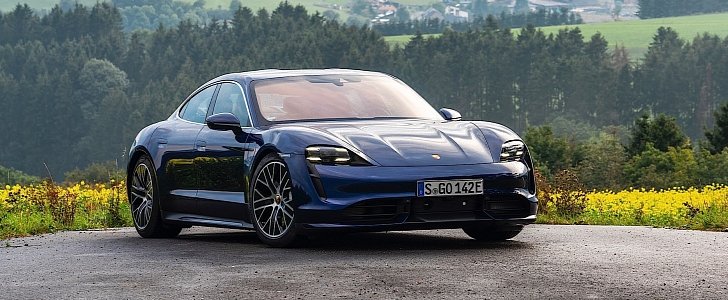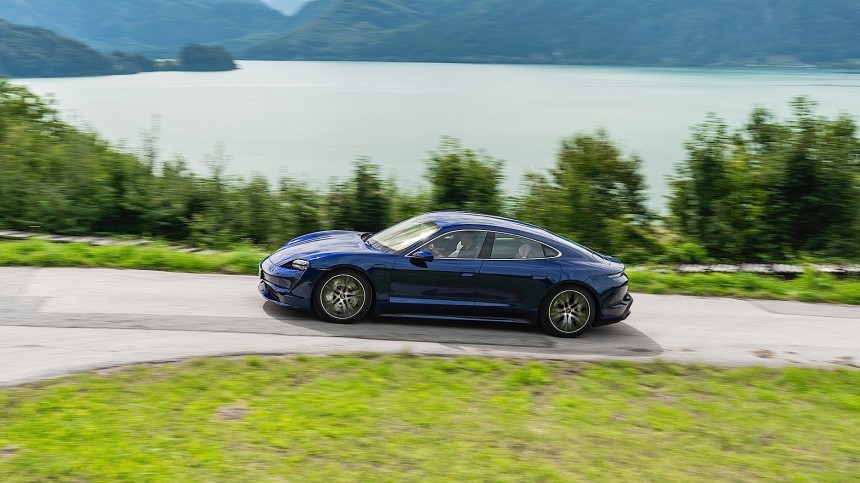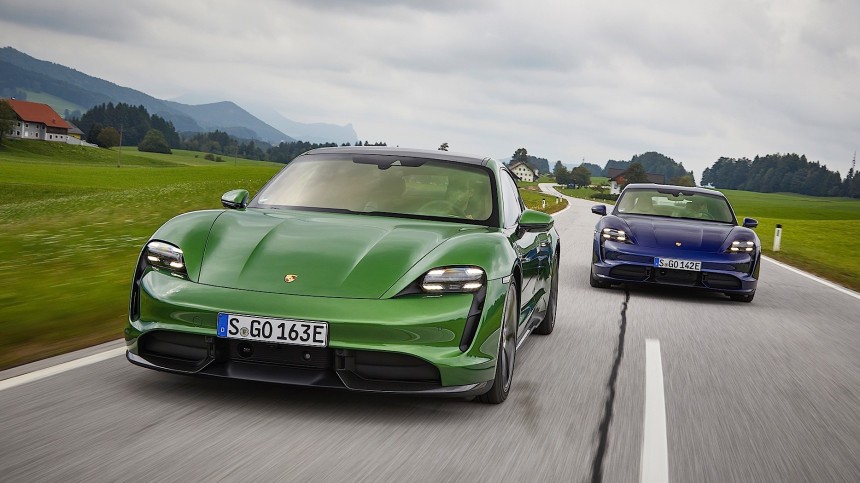Back when it was developing the original Roadster, Tesla intended to manufacture it with a two-speed gearbox that granted the car both better acceleration, as well as the ability to travel at higher speeds. However, the transmission Tesla tried to use for this purpose kept self-destructing like overly-inflated pufferfish and in the end, it was dropped in favor of a simple reduction gear compensated for by an increase in the electric motor’s peak power.
That was in 2008 and since then virtually all production electric vehicles have been made without an actual gearbox. Examples of vehicles developed around the same time as the first Tesla Roadster are the Nissan Leaf, which tops out at 151 km/h (91 mph) and the Chevrolet Volt whose top speed is 162 km/h (101 mph) - that’s the automotive equivalent of a mildly rapid sloth. And the Roadster wasn’t that much faster - for a car that could hit sixty in under four seconds, its 201 km/h (125 mph) top speed didn’t seem fitting - that was way to0 low to brag about at the pub after parting with $110,000.
Electric vehicle speeds have increased since then, even without resorting to geared transmission, although it has to be said the second-gen Nissan Leaf isn’t that much faster than the first-gen model - its top speed has been raised to 157 km/h (almost 98 mph), while the second-gen Volt’s speed is exactly the same as that of the first-gen model. But there are other much faster EVs out there that don’t need a gearbox to have a high top speed.
The Tesla Model S is a prime example of that - the top speed of the higher-powered 90D and P100D models is 250 kph (155 mph) and they’re still just using direct drive with a gear reduction - no shifting of gears takes place from naught to top speed. Even high-riding SUVs are now as fast as the Tesla Roadster was back in the day: both the Audi e-tron and the Jaguar i-Pace have a top speed of 200 km/h (125 mph).
Geared transmissions have also since found their way into actual battery-powered production cars, although calling the Rimac Concept_One (of which only eight units were ever made) a production car is like saying you can buy a Fabergé at your local corner shop. But it really does have individual two-speed twin-clutch gearboxes for each of its two rear motors (it has two additional motors powering the front wheels, but those only have reduction gears, not actual transmissions).
Then there is the BMW i8. An actual production car, although since it’s also motivated by a 1.5-liter three-cylinder turbo engine, it’s not a full-EV - it’s a plug-in hybrid. Still, the fact that BMW managed to make a two-speed transmission work reliably (through which power is sent from the front-mounted electric motor to the front wheels) is commendable. The i8’s two-speed transmission was not developed in-house by BMW, but by GKN in the United Kingdom.
For a hybrid vehicle, like the BMW i8, the front axle would have had to be disconnected from the motor at higher speeds, in order to avoid over spinning the motor, yet through the use of this specially created two-speed gearbox, the motor is still able to provide power all the way up to the i8’s top speed. It also allowed BMW to use a smaller motor than it would have sans this transmission, so it also helped improve the i8’s efficiency too.
Multispeed transmissions do work in electric vehicles and have been successfully used in cars competing in the Formula E racing series. These track-only cars had, for the first few Formula E seasons, five-speed gearboxes that the drivers actually shifted themselves, just like you would in an internal combustion-engined car.
Seeing those first Formula E cars going up through the gears in the wake of electric motor whirring was like watching a dolphin gracefully skip across the surface of the water - strange, and somewhat unbelievable, but really rather enjoyable to behold at the same time.
Now, this brings us neatly to the newly launched Porsche Taycan, a historic vehicle for the German automaker since it’s the first production EV in its portfolio. But aside from being a milestone vehicle for Porsche, it’s important for all EVs because it is genuinely the first full production EV that has a proper geared transmission.
The driver is deprived of the pleasure of manually shifting gears, as this is done automatically, but shifting between only two gears is about as satisfying as smoking a bubblegum cigarette; it’s best left to the car’s electronic brain.
The car apparently stays in second gear in its eco and normal modes, but when you put it in either Sport or Sport +, then it automatically starts shifting into the shorter first gear when it can (which is below 70 km/h or 43 mph). Oh, and keep in mind that the gearbox is only for the rear axle. The front axle just has a regular reduction drive.
Those who have driven the new Taycan say you don’t really notice the transmission working, but that the immense off-the-line acceleration feels like being slung from a trebuchet. The Taycan needs just 2.6 seconds to reach sixty and it’s in part helped by this new gearbox.
The transmission is made by ZF and it will be made available for other manufacturers at a later date, probably in two or three years. The most likely candidates are the vehicles with which the Taycan will share its platform - a very similar model from Audi, a rakish four-door coupe. Aside from that model, we really can’t speculate as to where else we might spot find this ZF box in the near future.
Electric vehicle speeds have increased since then, even without resorting to geared transmission, although it has to be said the second-gen Nissan Leaf isn’t that much faster than the first-gen model - its top speed has been raised to 157 km/h (almost 98 mph), while the second-gen Volt’s speed is exactly the same as that of the first-gen model. But there are other much faster EVs out there that don’t need a gearbox to have a high top speed.
The Tesla Model S is a prime example of that - the top speed of the higher-powered 90D and P100D models is 250 kph (155 mph) and they’re still just using direct drive with a gear reduction - no shifting of gears takes place from naught to top speed. Even high-riding SUVs are now as fast as the Tesla Roadster was back in the day: both the Audi e-tron and the Jaguar i-Pace have a top speed of 200 km/h (125 mph).
Geared transmissions have also since found their way into actual battery-powered production cars, although calling the Rimac Concept_One (of which only eight units were ever made) a production car is like saying you can buy a Fabergé at your local corner shop. But it really does have individual two-speed twin-clutch gearboxes for each of its two rear motors (it has two additional motors powering the front wheels, but those only have reduction gears, not actual transmissions).
For a hybrid vehicle, like the BMW i8, the front axle would have had to be disconnected from the motor at higher speeds, in order to avoid over spinning the motor, yet through the use of this specially created two-speed gearbox, the motor is still able to provide power all the way up to the i8’s top speed. It also allowed BMW to use a smaller motor than it would have sans this transmission, so it also helped improve the i8’s efficiency too.
Multispeed transmissions do work in electric vehicles and have been successfully used in cars competing in the Formula E racing series. These track-only cars had, for the first few Formula E seasons, five-speed gearboxes that the drivers actually shifted themselves, just like you would in an internal combustion-engined car.
Seeing those first Formula E cars going up through the gears in the wake of electric motor whirring was like watching a dolphin gracefully skip across the surface of the water - strange, and somewhat unbelievable, but really rather enjoyable to behold at the same time.
The driver is deprived of the pleasure of manually shifting gears, as this is done automatically, but shifting between only two gears is about as satisfying as smoking a bubblegum cigarette; it’s best left to the car’s electronic brain.
The car apparently stays in second gear in its eco and normal modes, but when you put it in either Sport or Sport +, then it automatically starts shifting into the shorter first gear when it can (which is below 70 km/h or 43 mph). Oh, and keep in mind that the gearbox is only for the rear axle. The front axle just has a regular reduction drive.
Those who have driven the new Taycan say you don’t really notice the transmission working, but that the immense off-the-line acceleration feels like being slung from a trebuchet. The Taycan needs just 2.6 seconds to reach sixty and it’s in part helped by this new gearbox.
The transmission is made by ZF and it will be made available for other manufacturers at a later date, probably in two or three years. The most likely candidates are the vehicles with which the Taycan will share its platform - a very similar model from Audi, a rakish four-door coupe. Aside from that model, we really can’t speculate as to where else we might spot find this ZF box in the near future.







